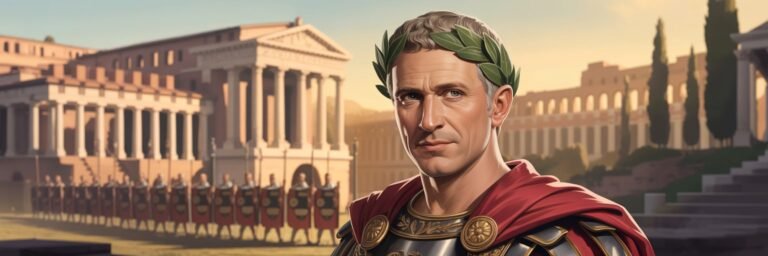INTRODUCTION
Our understanding of history is intrinsically linked to the instruments of warfare, and the leaders who masterfully wielded them, shaping the world one battle at a time. From Alexander the Great’s innovative use of the phalanx formation to Napoleon Bonaparte’s military genius that revolutionized warfare in the 19th century, the influences of these leaders echo through the annals of history. This article will dive into the weapons and tactics of some of history’s greatest leaders, their novel applications, controversies tied to them, and their lasting impacts.
HISTORICAL BACKGROUND
Our journey begins amidst the backdrops of the Ancient world, with the iconic figure of Alexander the Great. Rising to power in the 4th Century BC, Alexander profoundly relied on the sarissa—a long pike formidable in the hands of his phalanx formation—a tightly-packed military unit that helped conquer vast territories. Influenced by his mentor, Aristotle, Alexander ingeniously applied philosophies of nature into his battlefield tactics, setting a precedent for future leaders to meld intellect with military might.
Fast forward to Medieval Europe, and we encounter the legendary King Arthur, pivotal for his reputed Excalibur sword and the stinging arrow tactics of the English longbowmen, both contributing significantly to his military successes.
Then, onto the shores of the New World, where we meet the robust Aztec army commanded by the formidable Moctezuma II. His tactic of psychological warfare, use of close-quarter weapons like the maquahuitl—a sort of wooden sword outfitted with obsidian blades—showed a stark divergence from traditional European methodologies and opened a new chapter in global warfare practices.
THEORIES AND INTERPRETATIONS
When it comes to Alexander the Great, most historians concur that his success can be attributed to the phalanx’s tactical superiority, combined with his strategic brilliance. Professor Donald Engels, in his book “Alexander the Great and the Logistics of the Macedonian Army,” emphasizes the logistical and tactical innovations Alexander brought to his campaigns.
In contrast, the achievements of King Arthur spark disagreements. Arthur’s existence is debated among historians, with some like Geoffrey Ashe and Leslie Alcock arguing cogently for Arthur as an actual historical figure and others dismissing him as mere legend. If Arthur did exist, the longbow’s contribution to his victories is severely understated, overshadowed by the mythical Excalibur, claims military historian Matthew Bennett.
Similarly, New World civilizations’ military capabilities often fall victim to Eurocentric biases. Scholars such as Ross Hassig challenge this perspective, presenting a nuanced understanding of Aztec warfare, where psychological attack strategies and effective, close-quarter weapons were as or more crucial than simple numerical superiority.
MYSTERIES AND CONTROVERSIES
The narrative of these influential leaders is shrouded in mysteries and controversies. Alexander’s mysterious death at age 32, some say, was the result of an intricate plot devised by his generals, weary of his relentless pursuit of war. King Arthur’s entire existence is a subject of controversy, with many believing he was a romantic creation of later medieval scribes.
The conquest of the Aztecs by Hernán Cortés is another historical quandary. Some argue Cortés’ victory was more due to disease and native alliances than military superiority. However, this perspective diminishes the Aztecs’ military acumen, building a narrative that the Aztec army was primitive and inferior, a contentious point among historians.
SYMBOLISM AND CULTURAL SIGNIFICANCE
The weapons and tactics employed by these eminent figures hold significant cultural symbolism. Alexander’s sarissa represents his indomitable will to dominate; it transcends mere military might, embodying the prowess of the Greek civilization. King Arthur’s Excalibur is a symbol of divine authority and justice in Arthurian legend while the longbow showcases bold English resilience.
For the Aztecs, the maquahuitl signifies the ferocious intensity of New World civilizations, underscoring a unique form of warfare that contrasted starkly with European norms. These weapons bear testimony to the cultures they originated from, serving as emblematic representations of their time and space in history.
MODERN INVESTIGATIONS
Modern researchers, leveraging archaeological finds and advancements in historical methodology, continue to unveil fresh insights about these legendary leaders. For Alexander, recent discoveries like the tomb of his father, Philip II, have shed light on the sarissa’s exact dimensions and usage.
Concerning King Arthur, excavations at Cadbury Castle and Tintagel lend some archaeological credibility to the existence of a powerful warlord fitting Arthur’s description. Still, the search for the legendary Excalibur remains elusive.
Meanwhile, recent digs in Mexico City have unearthed more on the Aztec’s weaponry and battle tactics, enabling a more nuanced understanding of their martial culture, rebuffing prior claims of an ‘inferior’ New World civilization.
LEGACY AND CONCLUSION
The strategies, weapons, and cultural significance of these historical leaders—be they real or mythical—continue to echo through time. Alexander, King Arthur, Moctezuma—they altered the course of wars, advanced military technologies, and left long-lasting marks on their civilizations.
Their weapons, the sarissa, Excalibur, and maquahuitl, remain powerful symbols of civilizations past, intrinsically connected to societal values and philosophies. An understanding of their usage and evolution allows us to better comprehend the intervening cultural, social, and political atmospheres that have shaped our world.
Through these leaders, we recognize that military history is not merely the chronicle of conquest and slaughter; it is an intricate tapestry interwoven with the threads of leadership, innovation, controversy, and cultural identity—the very fabric of human development. As we continually unearth more about their weapons and strategies, we ultimately learn more about ourselves, our shared past, and the inevitable link between warfare and societal progression.



